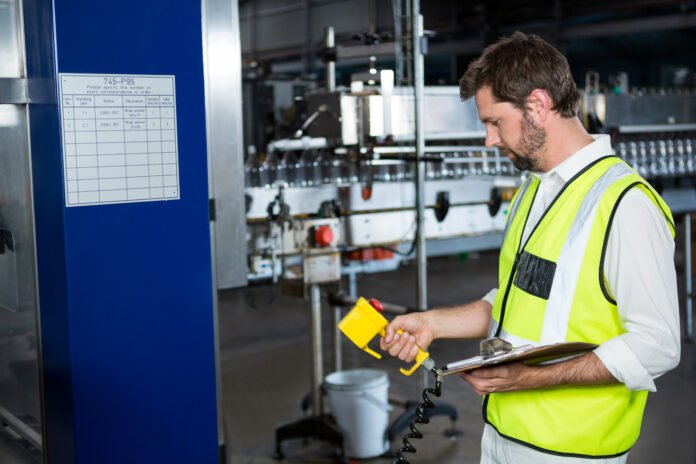Efficient energy use is a cornerstone of modern industrial operations. With the growing emphasis on sustainability and rising energy costs, factories are under increasing pressure to optimize their energy consumption while maintaining productivity. Technologies like Electrical Switchgear play a vital role in managing energy distribution, and intelligent load balancing has emerged as a game-changing solution, enabling factories to achieve both goals by distributing energy usage more efficiently.
In this blog, we’ll explore what intelligent load balancing is, how it works, and the transformative role it plays in optimizing energy use in factories.
What Is Intelligent Load Balancing?
Intelligent load balancing refers to the use of advanced technology and algorithms to optimize the distribution of energy across various systems, machinery, and processes in a factory. By analyzing real-time data, intelligent load balancing ensures that energy is directed where it’s needed most, minimizing waste and reducing costs.
This technology is often integrated with smart grids, IoT (Internet of Things) devices, and energy management systems to create a seamless energy optimization process.
Why Energy Optimization Matters in Factories
Factories are among the largest consumers of energy, often operating heavy machinery, lighting, and HVAC systems simultaneously. Inefficient energy use not only inflates operational costs but also contributes to higher carbon emissions, impacting the environment. Key challenges faced by factories include:
Peak Energy Demands:
Sudden spikes in energy usage lead to higher utility bills and strain on the power grid.
Wasted Energy:
Unused energy from idling machinery or inefficient processes contributes to unnecessary expenses.
Sustainability Goals:
With stricter regulations and increased demand for eco-friendly operations, factories need innovative solutions to meet energy efficiency standards.
Intelligent load balancing addresses these challenges by streamlining energy distribution, ensuring optimal use of available resources.
How Intelligent Load Balancing Works
1. Data Collection and Monitoring
Intelligent load-balancing systems rely on IoT sensors and connected devices to monitor energy consumption across the factory. These sensors provide real-time data on energy usage patterns, machine performance, and production schedules.
2. Analysis and Decision-Making
Using advanced algorithms and AI, the system analyzes the collected data to identify inefficiencies and predict future energy demands. It determines how to allocate energy to maximize efficiency without compromising production.
3. Automated Energy Distribution
Once the analysis is complete, the system automatically redistributes energy to where it is needed most. For example, it may allocate more energy to critical machines during peak production hours while reducing power to non-essential systems.
4. Continuous Optimization
The system continuously monitors performance and adjusts energy distribution dynamically. This ensures that the factory operates at peak efficiency at all times, regardless of changes in demand or production schedules.
Benefits of Intelligent Load Balancing in Factories
1. Reduced Energy Costs
By eliminating energy waste and optimizing consumption, factories can significantly lower their utility bills. Intelligent load balancing ensures that energy is used only when and where it’s required.
2. Enhanced Equipment Lifespan
Overloading machinery can lead to wear and tear, reducing its lifespan. Intelligent load balancing prevents this by evenly distributing energy and avoiding stress on equipment.
3. Improved Sustainability
Efficient energy use reduces carbon emissions, helping factories meet sustainability goals and comply with environmental regulations. This also enhances the company’s reputation as an eco-friendly business.
4. Increased Operational Efficiency
With optimized energy distribution, machinery operates more efficiently, leading to improved productivity and reduced downtime.
5. Real-Time Insights
Intelligent load balancing systems provide detailed insights into energy usage, allowing managers to make informed decisions and implement further improvements.
Applications of Intelligent Load Balancing in Factories
1. Optimizing Production Lines
In factories with multiple production lines, energy demands can vary significantly. Intelligent load balancing ensures that energy is distributed based on the real-time needs of each line, preventing bottlenecks and maintaining smooth operations.
2. Managing Peak Energy Loads
During peak hours, factories often experience spikes in energy usage. Intelligent load balancing mitigates this by redistributing energy and minimizing strain on the power grid.
3. Integration with Renewable Energy Sources
Many factories are incorporating renewable energy sources like solar panels and wind turbines. Intelligent load balancing optimizes the use of these resources, ensuring a steady energy supply while minimizing reliance on the grid.
4. HVAC and Lighting Systems
HVAC and lighting systems are major energy consumers in factories. Intelligent load balancing ensures these systems operate efficiently, adjusting energy allocation based on occupancy and time of day.
Final Thoughts
Intelligent load balancing is revolutionizing how factories approach energy management. By leveraging real-time data, advanced algorithms, and IoT integration, this technology ensures optimal energy use while reducing costs, enhancing sustainability, and improving operational efficiency. Companies like IndustLabs are at the forefront of providing innovative solutions, helping factories implement intelligent load balancing effectively. For factories striving to remain competitive in a rapidly changing world, intelligent load balancing is not just an option—it’s a necessity.
As industries continue to embrace innovation, intelligent load balancing will play a pivotal role in shaping a more sustainable, cost-effective, and efficient future. Now is the time for factories to adopt this transformative technology and unlock its full potential.




